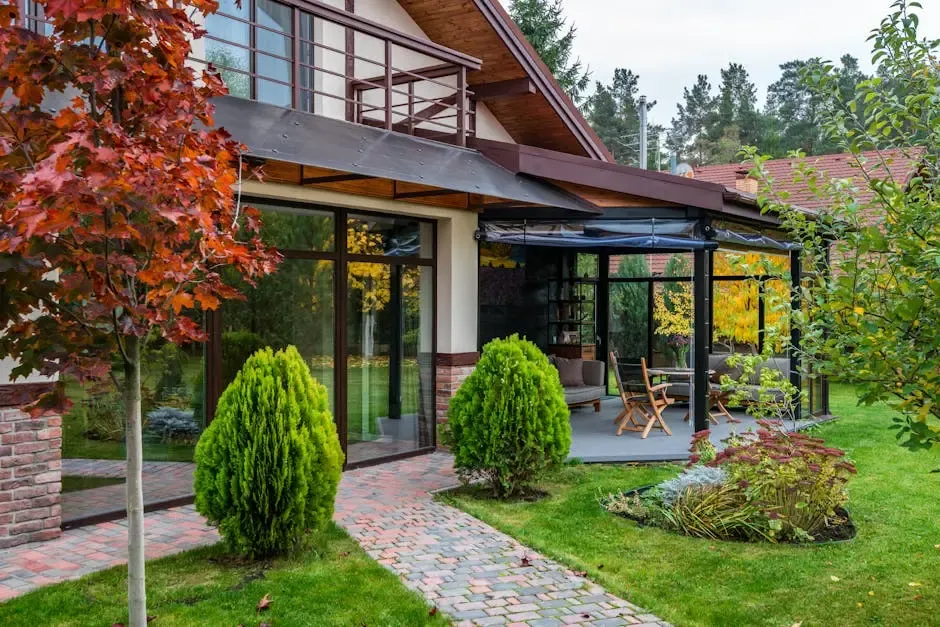
How to Design Unique Landscapes for All Seasons
Designing landscapes that captivate and endure throughout the changing seasons can be a rewarding challenge. By integrating thoughtful planning and creativity, you can create outdoor spaces that not only reflect your style but also celebrate the beauty of nature year-round. In this blog post, we’ll explore various strategies and ideas that will help you design unique landscapes that thrive in every season.
Understanding Seasonal Landscapes
Creating unique landscapes begins with understanding how seasons affect plant life and design elements. This section will explore the characteristics of each season and how they impact your landscape choices.
Spring brings a burst of life as flora awakens from dormancy. During this time, vibrant blooms and lush greens dominate the scenery. By selecting early bloomers like daffodils and tulips, you can paint your landscape with colors that invite warmth and joy after winter’s chill. This compelling change marks the onset of your growing season, invigorating not just plants, but also your spirit.
As summer reaches its peak, the landscape takes on a rich, full-bodied appearance. Here, the focus shifts to plants that can withstand the heat while offering shade and inviting exploration. Incorporating larger trees and flowering shrubs fosters a sense of privacy and provides a haven for both beneficial insects and local wildlife, transforming your garden into a lively ecosystem.
Autumn is perhaps one of the most colorful seasons, showcasing leaves in fiery hues of orange, red, and gold. This spectacular visual feast is an opportunity to enhance your landscape design with trees that offer stunning fall foliage. Maples are excellent choices here, as their colors stand out strikingly against the crisp blue sky. You can create unique landscapes that shift and evolve, mirroring nature’s transitions.
Finally, winter emerges, often under-appreciated for its own stark beauty. Understanding how to incorporate elements like ornamental grasses or evergreen shrubs can maintain visual interest even in the cold months. Frost-covered branches can serve as natural sculptures, offering a serene contrast to the lively summer scenery. Preparing your landscape for winter allows you to witness the seasons’ full cycle while showcasing the dynamic elements crafted throughout the year.
Choosing the Right Plants for Year-Round Interest
Not all plants are created equal when it comes to seasonal beauty. We’ll discuss various plants that offer visual appeal throughout the year, including evergreens, seasonal bloomers, and hardy perennials.
When curating your landscape, incorporating evergreens is a fantastic strategy for achieving year-round interest. These resilient plants retain their foliage throughout winter, providing a lush backdrop against the stark cold. Varieties like spruce and boxwood not only lend structure but also contrast beautifully with seasonal plants. By planting these at strategic focal points or the perimeter, you form a constant canvas that frames other seasonal features nicely.
Spring-flowering bulbs, such as crocuses and hyacinths, are essential for those wanting to indulge in early blooms. Their vibrant colors herald the arrival of spring, making them key players in your landscape narrative. Pairing these seasonal bloomers with perennials like daylilies and hostas ensures that the palette shifts from one season to the next without significant voids in color or visual interest.
Furthermore, consider incorporating native plants into your design. Species like black-eyed Susans and coneflowers not only enhance the beauty of your landscape but also support local pollinators. This choice enriches the ecosystem while ensuring that your garden remains vibrant and resilient, adapting to whatever Mother Nature imposes throughout the year.
By thoughtfully selecting plants that bloom at different times and provide structure across seasons, you create a unique landscape that evolves. Always keep in mind the height, texture, and color of your chooses—these elements will draw the eye in different seasons, ensuring your landscape remains a visual delight.
Incorporating Hardscaping Elements
Hardscaping features such as patios, walkways, and decorative stones can enhance your landscape during all seasons. In this section, we will discuss how to integrate these elements for both functionality and aesthetics.
Creating sturdy pathways with different materials like gravel, stone, or pavers creates structure and breaks the monotony of lush greenery. A winding path invites the visitor to explore your unique landscape, adding depth and dimension. Consider using natural stone for a rustic feel or sleek pavers for a modern touch; either way, your choices should harmonize with your overall design vision.
Patios are another fantastic hardscaping feature that serves as an outdoor living space, perfect for entertaining guests or relaxing with family. They can be adorned with furniture that allows for a seamless transition between inside and outside living. This outdoor area can be designed to feature seasonal decor, like vibrant cushions in summer and cozy throw blankets in winter, showcasing how your landscape is adaptable and functional throughout the year.
Integrating water features can enhance both the aesthetic and auditory experience of your unique landscape. Fountains or small ponds create lively centers of interest, attracting wildlife and providing a soothing atmosphere. Positioning these features strategically can draw attention from key angles while inviting visitors to engage with your outdoor space.
Additionally, consider using raised beds or terraced gardens as practical hardscaping solutions. Not only do they add visual interest with varying heights, but they also provide accessible gardening space. The combination of these elements not only establishes a unique landscape but enriches the habitat for local wildlife, encouraging biodiversity in your garden.
Creating Focal Points for Seasonal Changes
Focal points draw attention and create interest in your landscapes. Learn how to utilize sculptures, water features, or unique trees to keep your yard captivating as the seasons shift.
An effective focal point serves as the visual anchor for your landscape, drawing the eye and sparking curiosity. A striking sculpture positioned amidst blooming flowers or a grand tree can create a sense of drama and elegance in your garden. Choosing pieces that resonate with your personal style is essential, as they will reflect your unique vision and invite visitors to engage more intimately with your outdoor space.
Unique trees, such as Japanese maples, can serve dual purposes: they provide seasonal beauty and act as a striking focal point. Their characteristic branching structure and stunning fall foliage ensure they stand out in any season. Additionally, including evergreens as backdrop plants keeps your focal points visible and impactful throughout the year.
Incorporating seasonal decorations, like decorative pots filled with seasonal blooms, allows you to continuously refresh your focal areas. This approach not only enhances your unique landscape but keeps it dynamic and engaging. Additionally, rotating these elements shifts the narrative of your outdoor space, inviting fresh experiences for residents and passersby alike.
Designing for Wildlife and Biodiversity
A unique landscape can also support local wildlife. This section will cover how to choose plants and create features that attract birds, butterflies, and beneficial insects, enhancing the ecosystem of your garden.
Creating wildlife-friendly gardens is not only beneficial for nature, but it also enriches your personal outdoor experience. Incorporating native plants is the first step; they provide food and shelter to local birds and pollinators. Consider planting clusters of wildflowers and shrubs that bloom at staggered times throughout the season. This strategy ensures a reliable food source and continuous attraction for various species.
In addition to plants, adding elements like birdhouses or butterfly gardens can further enhance your landscape’s biodiversity. Birdhouses invite existing species and promote nesting opportunities. Meanwhile, butterfly gardens filled with nectar-rich plants can attract stunning butterflies, providing both beauty and educational moments for eager nature observers.
Moreover, consider the water element in your landscape. A small pond or even a birdbath can act as a life-sustaining resource for local wildlife. Tapping into the natural rhythm of your surroundings not only elevates your overall garden design, but it brings a touch of vibrancy. You’ll find joy in witnessing the complex interactions between different wildlife species thriving in your personalized landscape.
Maintenance Tips for Seasonal Landscapes
To keep your landscape looking its best year-round, regular maintenance is essential. We’ll provide practical tips on seasonal care, including pruning, mulching, and seasonal plant care.
Understanding the growth patterns of your chosen plants aids in effective maintenance. For instance, late winter is the ideal time for pruning many deciduous trees and shrubs; this practice encourages new growth as spring approaches. Regularly deadheading flowering plants throughout the growing season also encourages more blooms, keeping your landscape vibrant.
Mulching is another crucial aspect of seasonal maintenance. Applying mulch not only suppresses weeds and retains moisture but also adds a polished finish to your garden beds. During the fall, a layer of organic mulch can provide insulation for roots during winter, promoting healthy growth for the upcoming spring.
Lastly, seasonal plant care cannot be overlooked. Monitoring for pests and diseases is essential to a thriving landscape. Early detection and treatment can save your plants and promote a healthy ecosystem. Offering localized care, such as fertilizing in spring or adjusting watering schedules during hot summer months, will ensure each part of your unique landscape flourishes in harmony.
Wrap-Up: Embracing Seasonal Beauty in Landscape Design
By considering seasonal changes and embracing creativity, you can design a landscape that remains vibrant and engaging throughout the year. With the right plants, materials, and design principles, your outdoor space can reflect your unique vision while adapting beautifully to the changing seasons.

